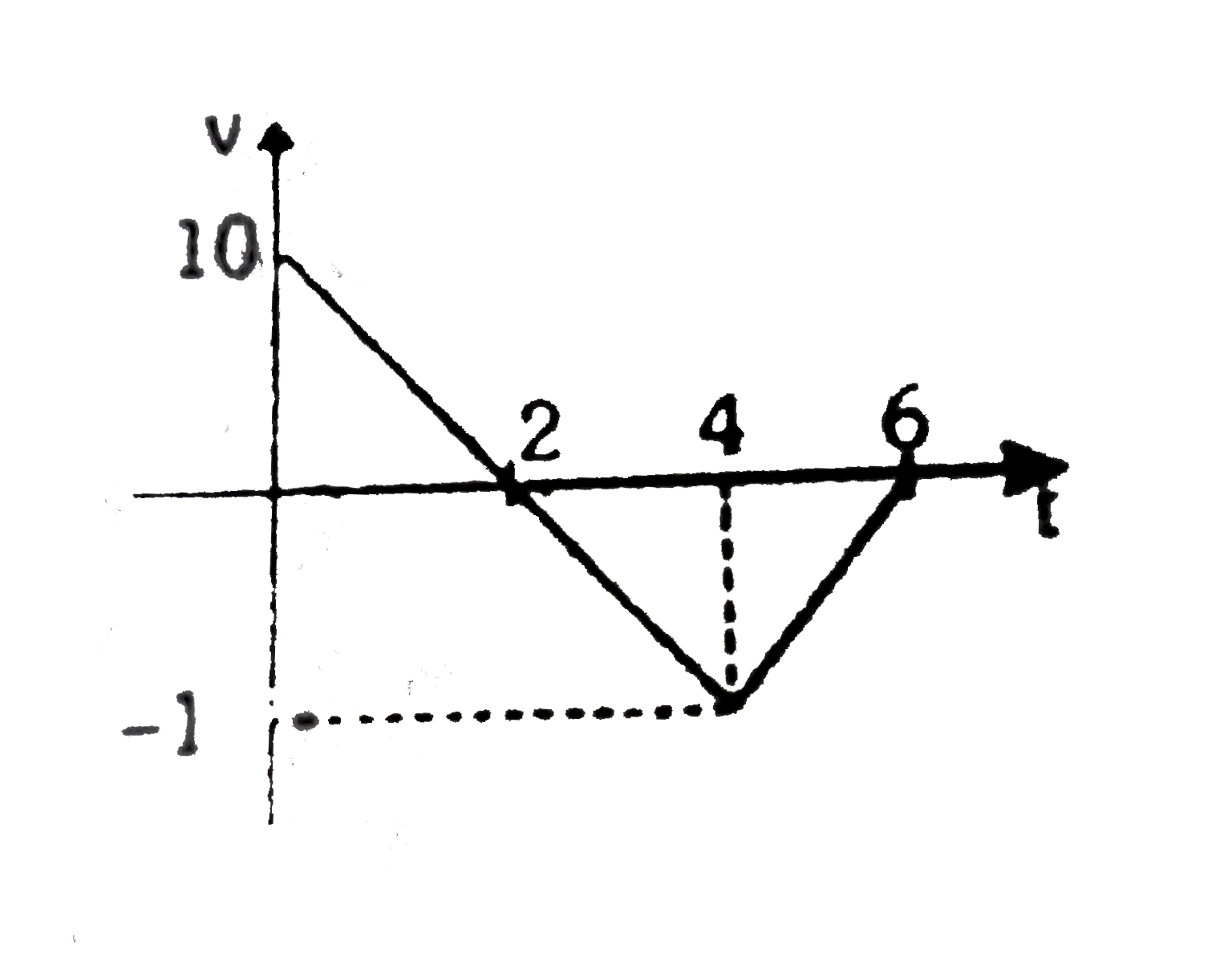A balloon rises up with constant net acceleration of 10m/s2. After 2 s a particle drops from the balloon. After further 2 s match the following : (Takeg=10m/s2)
Column IColumn II(A)Height of perticle from ground(p)Zero(B)Speed of particle(q)10SIunits(C)Displacement of Particle(r)40SIunits(D)Acceleration of particle(s)20SIunits
The correct Answer is:A, B, C, D
Step by step video, text & image solution for A balloon rises up with constant net acceleration of 10 m//s^(2). After 2 s a particle drops from the balloon. After further 2 s match the following : ("Take" g=10 m//s^(2)) {:(,"Column I",,,"Column II"),((A),"Height of perticle from ground",,(p),"Zero"),((B),"Speed of particle",,(q),10 SI "units"),((C),"Displacement of Particle",,(r),40 SI "units"),((D),"Acceleration of particle",,(s),20 SI "units"):} by Physics experts to help you in doubts & scoring excellent marks in Class 11 exams.
Updated on:21/07/2023Topper's Solved these Questions
- KINEMATICS 1BOOK - DC PANDEYCHAPTER - KINEMATICS 1EXERCISE - INTEGER_TYPE
15 Videos
- KINEMATICS 1BOOK - DC PANDEYCHAPTER - KINEMATICS 1EXERCISE - COMPREHENSION_TYPE
19 Videos
- KINEMATICSBOOK - DC PANDEYCHAPTER - KINEMATICSEXERCISE - INTEGER_TYPE
11 Videos
- LAWS OF MOTIONBOOK - DC PANDEYCHAPTER - LAWS OF MOTIONEXERCISE - Medical entrances gallery
39 Videos
Similar Questions
For the velocity -time graph shown in figure, in a time interval from t=0 to t=6s, match the following:

Column IColumn II(A)Change in velocity(p)−5/3SIunit(B)Average acceleration(q)−20SIunit(C)Total displacement(r)−10SIunit(D)Acceleration ay t=3s(s)−5SIunit
View SolutionA balloon starts rising from the ground with a constant acceleration of 1.25m/s2. After 8 s, a stone is released from the balloon. Find the time taken by the stone to reach the ground. (Take g=10m/s2)
View Solution
Knowledge Check
A balloon os mass 2 KG is rising up with an acceleration of 4ms2 . The upward force acting on the balloon is (g=10ms−2
A0.8 kgfB2.8 kgfC2.4 kgfD2.0 kgfA ballon is ascending with a constant velocity of 20 m/s. A particle is dropped from it when its height was 60m above the ground. Find if (g=10m/s2). The time of flight of particle
A4 sB5sC3sD6s
In the diagram shown in figure, match the following columns (take g=10ms−2)

Column IColumn II(A) Normal reaction(p) 12 SI unit(B) Force of friction(q) 20 SI unit(C) Acceleration of block(r) zero(s) 2 SI unit
View SolutionIn the diagram shown in figure, match the following (g=10m/s2)

Column-IColoumn-II(A)Acceleration of 2kg block(P)8 Si unit(B)Net force on 3kg block(Q)25 SI unit(C)Normal reaction between 2 kg and 1kg(R)2 SI unit(D)Normal reaction between 3 kg and 2kg (S) 45 SI unit(T) None
View SolutionIn the s-t equation (s=10+20t−5t2) match the following columns.
∣∣ ∣ ∣ ∣ ∣ ∣∣Column IColumn II(A)Distancec travelled in 3s(p)−20 units(B)Displacement 1 s(q)15 units(C)Initial acceleration(r)25 units(D)Velocity at 4 s(s)−10 units∣∣ ∣ ∣ ∣ ∣ ∣∣
View SolutionA balloon of mass 2 kg is rising up with an acceleration of 4ms2. The upward force acting on the balloon is (g=10ms−2)
View SolutionA particle of mass 1 kg is projected upwards with velocity 60ms−1. Another particle of mass 2kg is just dropped from a certain height. After 2s, match the following.
[Take, g =10ms−2]
column1column2Accelertion of CMP ZeroB Velocity of CMQ 10 SI unitC Displacement of CM20 SI unit-S None
View SolutionA particle is rotating in a circle of radius 1m with constant speed 4m/s. In time 1s, match the following (in SI units)
Column IColumn II(A)Displacement(p)8sin2(B)Distance(q)4(C)Average velocity(r)2sin2(D)Average acceleration(s)4sin2
View Solution
